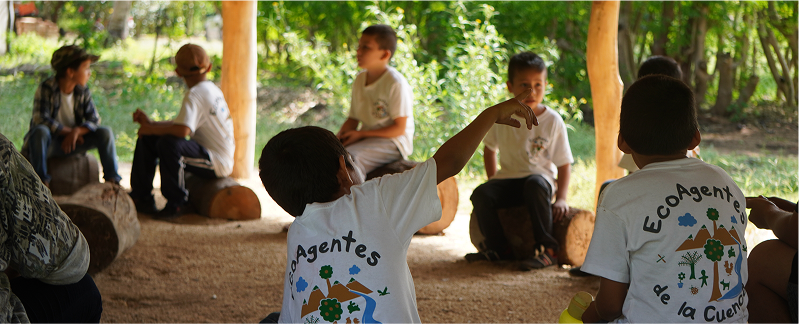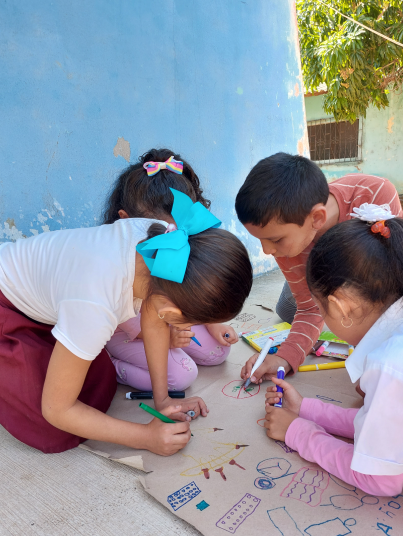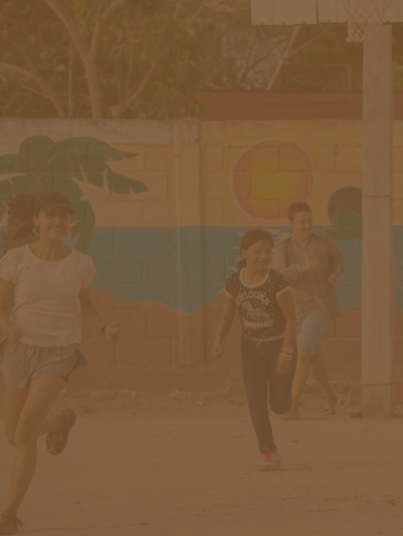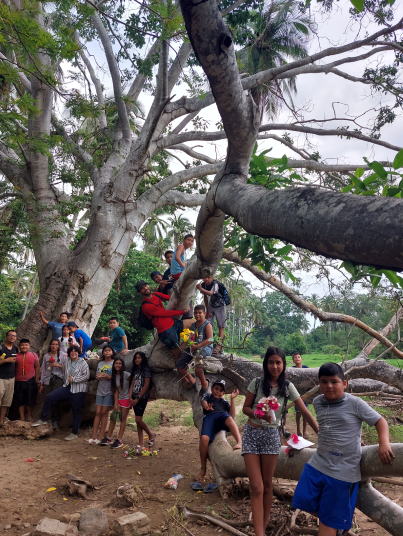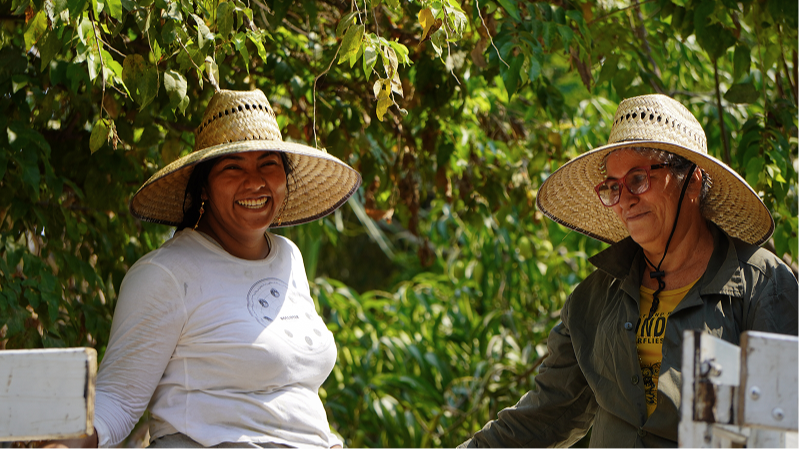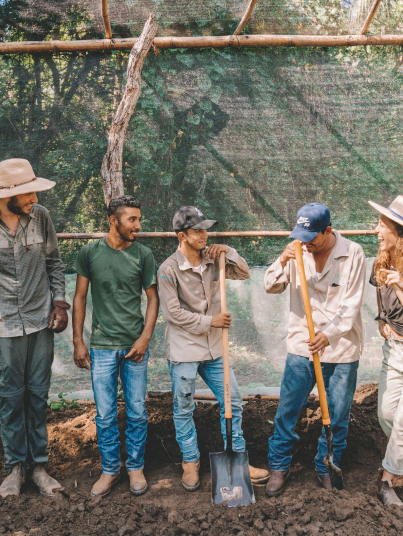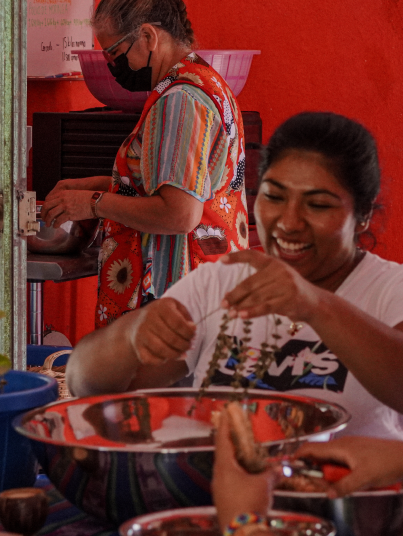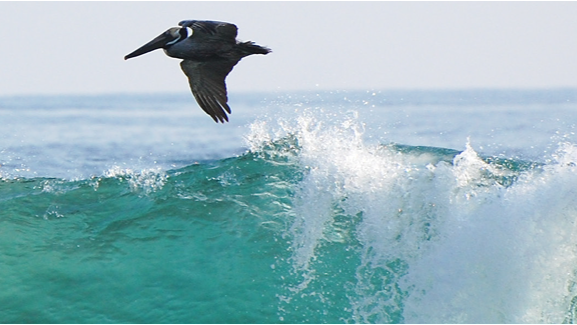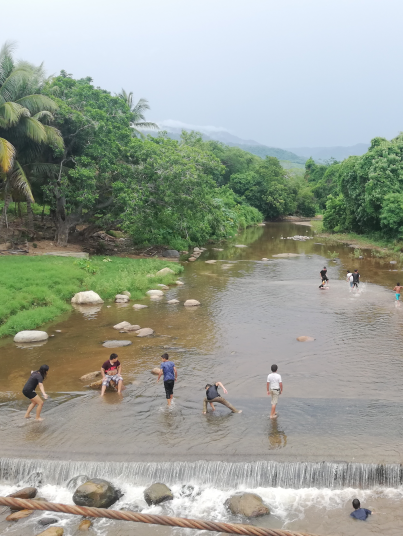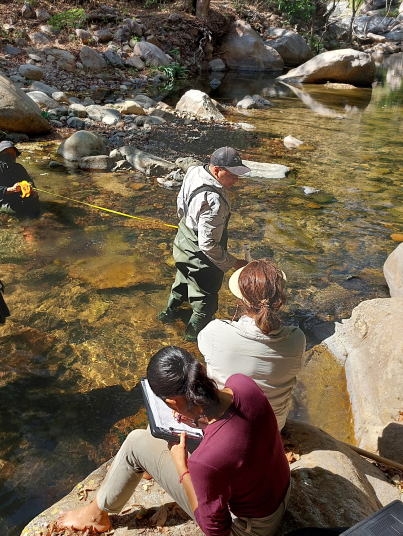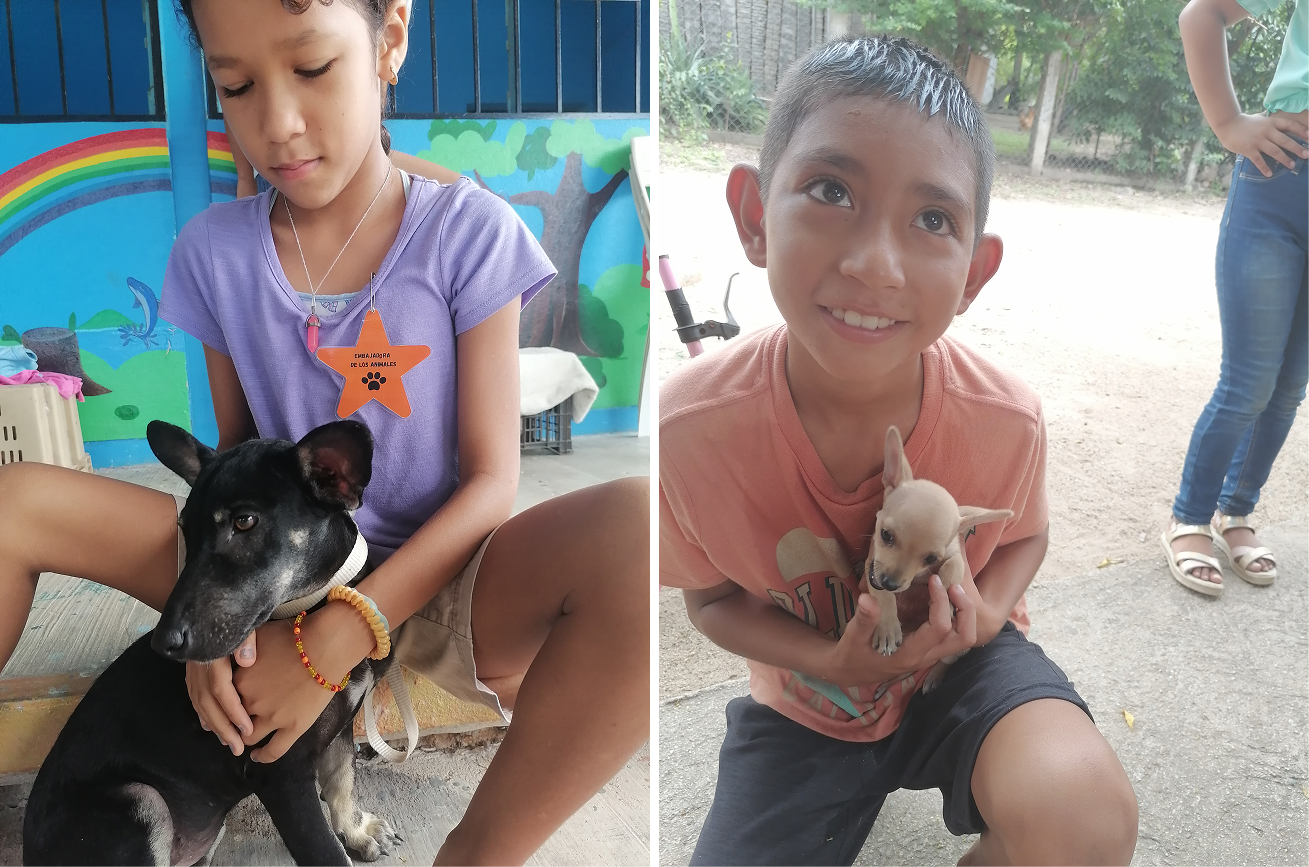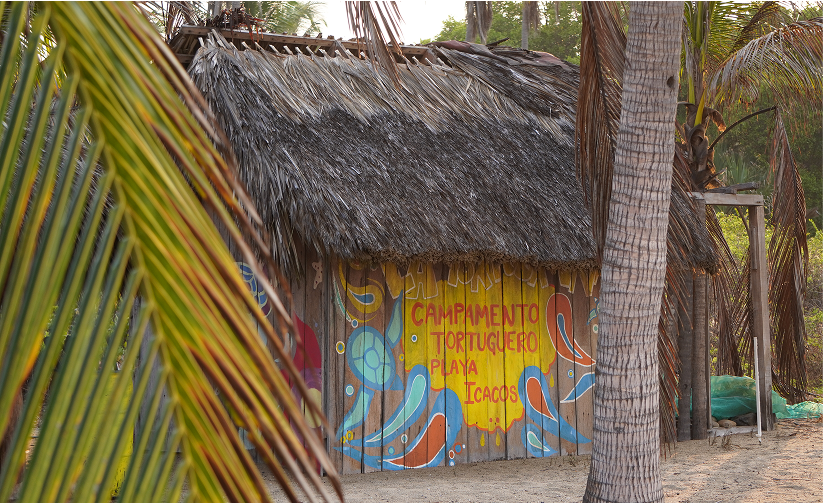
Our Nodes
Marine Conservation
Regenerative Education
Permaculture & Local Economy
Water Monitoring & Conservation
Terrestrial Habitat Regeneration
Marine Conservation
Sea turtles have existed for millions of years and play a vital role in maintaining the balance of marine and coastal ecosystems. They help control jellyfish populations, keep seagrass beds healthy, contribute to reef vitality, and transport nutrients between the ocean and the shore. Among the species we protect are the olive ridley turtle (Lepidochelys olivacea), the black turtle (Chelonia mydas), and the leatherback turtle (Dermochelys coriacea). Today, all of them face numerous threats, including predation, pollution, coastal development, bycatch, climate change, and illegal trafficking.
In response to these challenges, at La Tortuga Viva we work to protect sea turtles from the moment they arrive on the beach until their hatchlings return to the sea. We conduct nightly patrols to locate and safeguard vulnerable nests, protect them from predators and poachers, and monitor the incubation process through to the release of the hatchlings. We also carry out environmental education activities to raise awareness among local communities and visitors about the importance of conserving these species.
La Tortuga Viva began as a community-led project in the year 2000 and is a clear example that local communities can be the foundation of initiatives as large and important as ReSiMar is today. The camp is currently run thanks to the daily efforts of 14 local volunteers, whose passion for conservation has driven the project since its inception. Without their presence, none of the activities at the turtle camp would be possible.
Every action, no matter how small it may seem, has a real impact on the future of sea turtles and our planet. Protecting them not only helps preserve these ancient species, but also contributes to the health of the ocean, which we all depend on.
Support our regenerative efforts.
Regenerative Education
Regenerative education honors the territory as a central axis of learning. It recognizes learning as a dynamic process that involves local knowledge, reciprocity, and collective care.
Based on these principles, the EcoAgents of the Watershed project was created—an educational program that acknowledges the rich diversity of the micro-watershed and views children as community leaders who promote the regeneration of their territory through their actions. This is achieved through care and respect for life, play as a form of learning, positive social relationships, and autonomy in decision-making.
Despite this beautiful abundance, students in the micro-watershed also face economic challenges. Thus, the Adopt a Student scholarship program was born. Through donations, it supports children and youth in vulnerable economic situations by covering school-related expenses such as uniforms, supplies, registration fees, lunches, and other school costs that some families cannot afford. However, this scholarship program also seeks to promote a system of reciprocity in which students contribute to projects that benefit their educational community or act as sensitive, empathetic, and responsible citizens toward their environment.
In the Juluchuca micro-watershed, regenerative education takes many forms—from afternoons of play and school gardens with an agroforestry approach to serving as guardians of the turtle camp. All of this is aimed at creating learning spaces that happen both inside and outside of school and that position children as leaders of change.
Currently, in collaboration with Mexicanos Primero, a regenerative curriculum is being developed. It proposes a detailed methodology accompanied by educational activities that can be replicated in different schools across the country—or in other educational spaces—that are motivated to implement an alternative teaching method. This approach strives for prosperity, justice, and cooperation in the pursuit of a systemic regeneration that offers a more hopeful future for children and youth.
Support our regenerative efforts.
Permaculture & Local Economy
From the heart of Juluchuca, Guerrero, the Permaculture Node drives community-led processes focused on ecological regeneration, solidarity-based economies, and ancestral knowledge. Through close collaboration with Gente Viva, their women’s cooperative and local producers, we promote agroecological practices, training workshops, and spaces for well-being that strengthen the social fabric and reconnect us with the land. Our approach combines the regenerative production of super foods like turmeric, moringa, and hibiscus with technical support, fair marketing, and the celebration of traditional knowledge.
Each season is an opportunity to grow together. This year, we’ve facilitated workshops on natural dyes and medicinal blends, introduced new products in our production, planted agroforestry systems, and expanded the reach of our products into regional markets and hotels. We also celebrated the move of the women’s cooperative into a new community space and participated in national gatherings where our members shared their stories with confidence and pride.
We believe in a living, resilient, and regenerative watershed and we work every day to make it a reality. From professionalizing community production to strengthening local and international alliances, every action taken by the Permaculture Node aims to plant seeds of transformation for the future. We invite all who visit this page to support, join, or be inspired by a project that shows how collective change begins at the local level.
Support our regenerative efforts.
Water Monitoring & Conservation
As part of the ReSiMar project, the Water Node coordinates a community-based water quality monitoring program in the Juluchuca sub-watershed in Guerrero, known as the “Citizen Scientists” program. Through this initiative, students and teachers from local tele-high schools are trained to collect and analyze physical-chemical, biological, and landscape data from the river. The resulting baseline study offers reliable information on the water quality of our sub-watershed, supporting informed decision-making and fostering a renewed connection and appreciation for the natural environment surrounding our communities.
Monitoring took place during both the dry (March 2024) and rainy (November 2024) seasons, covering ten strategic sites along the watershed — from the upper to the lower reaches. This allowed the detection of a pattern of progressive degradation. While the upper areas still host healthy ecosystems, the middle and lower parts show significant reductions in water flow, loss of riparian vegetation, and the presence of bacteria such as coliforms and E. coli, linked to unregulated agricultural practices and water overextraction.
The analysis of bioindicators, such as diatoms, macrophytes, and aquatic macroinvertebrates, confirmed a decline in environmental quality downstream, with pollution-tolerant species dominating impacted areas. Although the outlook is not ideal, the Juluchuca sub-watershed is at a critical point where timely intervention can support its regeneration—creating the ideal conditions for the development of the citizen science program. Through workshops, fieldwork, and analysis in community labs, the program fosters a deep understanding of river health and cultivates future environmental leaders. In addition to generating scientific evidence to guide restoration efforts (such as riparian reforestation or the adoption of agroforestry systems), the project promotes regenerative landscape management through community engagement and the responsible use of water resources.
Support our regenerative efforts.
Terrestrial Habitat Regeneration
Biodiversity is present throughout the watershed, and the goal of this node is to defend and conserve every form of life in the territory. The beauty and uniqueness of this land dwell in the manifestations of life, from the microorganisms in the soil to the grandeur of the forests. Therefore, this node works closely with the communities to develop programs that promote and maintain a clean, healthy, and abundant place to live.
The program that launched the node is a collaboration with the company Tierra Sphere, which invites local producers to participate in a reforestation project using agroecological techniques. They are planting large swaths of land with the native Uje tree boasting remarkable qualities for both the environment and human health. However, the project goes beyond reforestation; it also promotes planting other species such as cacao, turmeric, banana, moringa, and other high‑medicinal‑value plants, transforming large grassland areas into strong, fertile forests that help regenerate the soil.
Another benefit of this collaboration is to emphasize the importance of agrochemical‑free soil, rich in nutrients and populated with trees that capture carbon, contributing to the regeneration of the entire ecosystem.
Alongside this initiative, working in terrestrial habitat regeneration will encourage communities to become more actively engaged, collaboratively crafting strategic solutions to the daily needs and challenges they face and transforming areas into designated zones of conservation. These regions will honor natural cycles and embrace a future in which all generations can witness and safeguard nature’s wonders.
Support our regenerative efforts.
Special Projects
The jaguar (Panthera onca) is the third-largest feline in the world, the largest in America, and a keystone species for the health of the ecosystems it inhabits. As an apex predator, it regulates the populations of other species and helps maintain natural balance, making its presence an indicator of a healthy ecosystem. However, jaguar populations are increasingly fragmented due to the loss and degradation of more than 50% of their habitat, illegal hunting, and conflicts with human activities. In many regions of Mexico, the jaguar is at serious risk of disappearing and is currently classified as an endangered species.
Since 2010, there has been strong interest in documenting the presence of jaguars in the upper watershed of Juluchuca, Guerrero, a situation that led researchers to begin visiting the area. However, it wasn’t until late May 2024 that a key event occurred: residents of the community of Vistahermosa reported sighting a jaguar accompanied by two cubs. This information was shared with the ReSiMar team, prompting an immediate mobilization to begin monitoring the species and laying the foundation for its conservation in the region.
Thanks to the involvement of PhD. Gerardo Ceballos, a researcher at the Institute of Ecology at UNAM, this information also reached PhD. Fernando Ruiz, director of Wild Felids Conservation, who enthusiastically joined the local efforts. As a result of this collaboration, trail cameras were installed at various sites across the mountains starting in June 2024. Through this effort, two photographic captures of jaguars have been obtained, strengthening the evidence of their presence in the area and giving momentum to a conservation project grounded in science and local participation. Community support has been essential in making this monitoring possible; without their knowledge of the territory, we would not be able to access many of the sites currently under observation.
This monitoring initiative is part of the national effort to conserve jaguars in Mexico, coordinated by various institutions and organizations working to protect this iconic species across the country.
Our work in the sierra focuses on the conservation of the jaguar through trail cameras monitoring, the identification of biological corridors, collaboration with local communities, and the implementation of environmental education initiatives. This is a project that aims to promote coexistence between people and wildlife, as well as prevent conflicts among species that share the same territory. We firmly believe that protecting the jaguar is only possible when it is built through respect, dialogue, and the participation of those who share the land with it.
Spray and Neuter Program
In many rural communities in Mexico, the uncontrolled growth of dog and cat populations poses a challenge not only to animal welfare but also to public health and ecological balance. The lack of access to veterinary services and sterilization campaigns leads to hundreds of animals living in vulnerable conditions, exposed to abandonment, disease, and even conflicts with local wildlife.
Spaying and neutering are not only ethical and effective measures, they are also urgent actions to address the unchecked reproduction of domestic animals. It is estimated that a single unsterilized female and her offspring can produce up to 67,000 puppies or kittens in just six years, worsening the overpopulation problem and increasing the risk of abandonment. Without sterilization initiatives, many of these animals end up living in precarious conditions, exposed to diseases that can be transmitted to other animals and humans. Failing to sterilize at the right time can also lead to various health conditions, many of them preventable and potentially fatal if left untreated. In females, this procedure significantly reduces the risk of serious illnesses such as uterine infections or certain types of cancer, greatly improving their long-term health and wellbeing.
Aware of this reality, ReSiMar has launched a sterilization project for dogs and cats in the community of Juluchuca, Guerrero, extending our services to animals from five neighboring communities. The main goal of this initiative is population control, reducing the excessive reproduction of domestic animals and, in turn, improving the quality of life for both the animals and the people who live alongside them. Over time, this effort has been strengthened through periodic campaigns. The first took place in May 2019, with 113 animals sterilized, and the second in October 2022, with a total of 81 animals treated. These campaigns mark key milestones in building a long-term project that seeks to address a complex issue in a comprehensive and sustainable way.
Through these campaigns, we offer low-cost veterinary care, with a strong focus on sterilization as a key tool to prevent abandonment and animal suffering. We also promote education around responsible pet ownership, vaccination, and basic animal care strengthening collective awareness toward more harmonious coexistence. This effort would not be possible without the active collaboration of volunteer veterinarians, partner organizations, and, most importantly, the local communities who trust in the process and participate in each campaign. At ReSiMar, we are deeply convinced that transformation begins at the local level, and that respect for all living beings is essential to building healthier, safer, and more compassionate communities.
Support our regenerative efforts.© Copyright 2025 - ReSiMar













